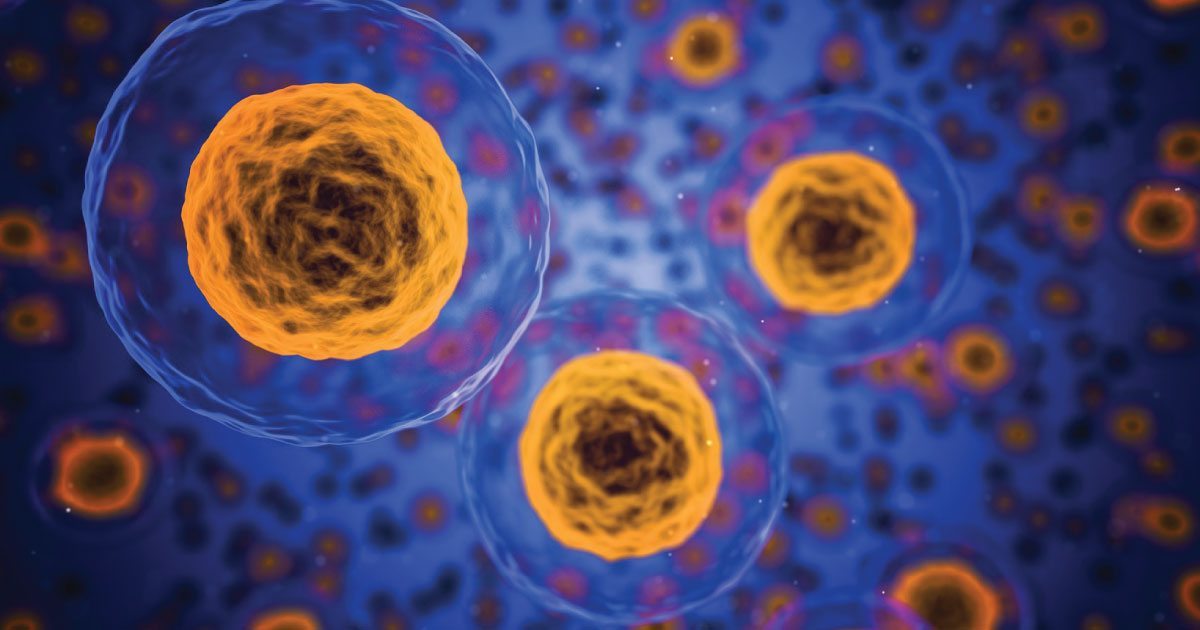Month: March 2013

Mesothelioma Patients May Benefit from Demonstration of Cure in Another Incurable Cancer
Mesothelioma is a rare, incurable cancer of the lining of the lungs, heart and abdomen that is caused by past exposure to asbestos. The cancer is extremely aggressive making treatment challenging. However, researchers agree that understanding how to stop metastasis is critical for increasing survival in mesothelioma patients. The same is true of other cancers, but blocking the growth of tumors has been elusive and has remained a key focus of cancer research. Now, researchers at UT Southwestern Medical Center report they have successfully blocked tumor development of an incurable cancer, effectively demonstrating a cure.
The researchers developed a genetic mouse model of untreatable malignant peripheral nerve sheath tumors, a form of cancer of the connective tissue surrounding nerves, to conduct their study. They showed that by blocking the activity of a receptor molecule named CXCR4 they were able to inhibit tumor development.
“To my knowledge, this is the first time that a mouse model of a genetically defined malignant human cancer has been generated in which the formation of the tumor from beginning to end can be monitored and in which blocking the pathway cures the mouse of the tumor,” said Dr. Luis Parada, chair of the department of developmental biology at UT Southwestern and senior author of the study.
The National Institutes of Health reports that mouse models are critical in medical research. The models “that recapitulate many aspects of the genesis, progression, and clinical course of human cancers are valuable resources to cancer researchers engaged in a variety of basic, translational, clinical and epidemiological investigations.”
According to the study published in Cell, the researchers found that CXCR4, a protein essential for tumor growth, is more abundant in cancerous cells than in precursor cells. They also found that a molecule produced by the cancer cells themselves, CXCL12, works with CXCR4 to stimulate yet another protein that causes the cells to split and divide, thus stimulating more growth.
Through both genetic manipulation and injection of an FDA-approved antagonist drug for CXCR4 the researchers were able to inhibit the cancer growth. The approach was less effective in tumors without the increased expression of CXCR4.
“We are very encouraged by these findings because they provide us with new directions and therapeutic windows to combat this deadly cancer, where none exist today,” said Dr. Lu Q. Le, co-senior author of the study and assistant professor of dermatology.
Researchers from the University of California published a separate study reporting that CXCR4 and CXCL12 proteins “are highly expressed in most mesothelioma cell lines and tumor tissues, suggesting that CXCR4 and CXCL12 may be used as biomarkers for patients with mesothelioma. The CXCL12-CXCR4 interaction may be a potential therapeutic target for mesothelioma.”
Targeted, personalized therapy based on a patient’s unique mesothelioma characteristics, such as expression of certain biomarkers like CXCR4, optimizes the potential for success of the treatment and offers treatment options that may not otherwise have been considered.
Mesothelioma, caused by asbestos exposure, is diagnosed in close to 3,000 Americans each year. Currently there is no cure for the disease, but research into treatments of other cancers is followed closely by the mesothelioma community in hopes the results are transferrable to mesothelioma patients.
The UT Southwestern Medical Center researchers are currently planning human trials.

New Mesothelioma Cell Analysis Technique May be Borrowed from Astronomers
Cancer researchers are now taking tips from astronomers when it comes to analyzing cell slides. In order to definitively diagnose many cancers, especially rare cancers such as mesothelioma, a tissue biopsy must be examined through a microscope to identify abnormal cells. However, if researchers in the UK have their way, an automated process borrowed from their science comrades who focus on outer space could make microscopic analysis a thing of the past.
According to a study in the British Journal of Cancer, scientists from the Cancer Research UK Cambridge Institute, and the Department of Oncology and the Institute of Astronomy at the University of Cambridge, collaborated to adapt techniques “used by astronomers to automatically pick out indistinct objects in the night sky” for use in the cancer lab. The researchers developed image analysis algorithms adapted from astronomical algorithms in order to automate immunohistochemistry, the technique used in microscopic analysis to diagnose cancer.
Cellular analysis and biopsy techniques used when checking for cancer, as well as when determining the efficacy of a treatment, were discussed recently by a panel of oncologists on OncLive’s Peer Exchange Series. The oncologists agreed that biopsy results can be used not only to diagnose cancer but to drive a cancer patient’s treatment plan. Anne S. Tsao, MD, Director, Mesothelioma Program, The University of Texas MD Anderson Comprehensive Cancer Center, said when analyzing tissue samples, physicians need to “shoot for genetic testing and personalized medicine for treatment decisions.”
Professor Carlos Caldas, from Cancer Research UK’s Cambridge Institute, and senior author of the study, “Astronomical algorithms for automated analysis of tissue protein expression in breast cancer,” suggested that sophisticated techniques such as this will help researchers better understand “the key genes and proteins important in predicting the success or failure of different cancer treatments.”
“It’s great that our software, which was originally developed to help track down planets, is now also being used to help improve the outlook for cancer patients, much closer to home,” said Dr. Nicholas Walton from Cambridge University’s Institute of Astronomy in a press release from Cancer Research UK.
The researchers compared the results of the manual process with the automated process after measuring the levels of three different proteins linked to more aggressive cancers across 2,000 tissue samples from breast cancer patients.
“The results have been even better than we’d hoped,” the researchers reported. However, they pointed out that there is much more testing to be done, with the next test involving samples from more than 20,000 breast cancer patients.
Julie Sharp, senior science information manager at Cancer Research UK, says: “This unlikely collaboration between astronomers and cancer researchers is a prime example of how, by working together, scientists from different disciplines can bring about innovative new solutions for beating cancer.”
Mesothelioma patients have limited treatment options; however, breakthroughs like this can open another path towards personalized medicine. Treatments geared to patients’ unique genetic characteristics improve their survival chances. Mesothelioma, a cancer of the lining of the lungs, abdomen and heart caused by past exposure to asbestos, is diagnosed in close to 3,000 Americans each year.

Mesothelioma Survivor Lives in the Moment
Through an email interview last week Louise “Lou” Williams, of Mt. Macedon, Australia, a wife, mother, grandmother and mesothelioma survivor, shared information about her struggles with mesothelioma, her thoughts on the disease and her advocacy efforts for the international mesothelioma community.
Louise Williams saw the devastating effects of mesothelioma when she watched her father die from the disease in 1985. In eight short months, Lou’s father, Norman, went from an active, healthy 54-year-old to a deceased victim of the asbestos cancer. Unfortunately, less than 20 years later, Lou was faced with the same overwhelming prospect when she was diagnosed with peritoneal mesothelioma at the age of 47.
Like many mesothelioma patients though, Lou’s diagnosis didn’t come until years after she began experiencing unexplained symptoms, including chronic fatigue, excruciating pain and a raised hardness in the groin area. When one doctor told her to come back in two years for a second test after finding an abnormal cell, Lou admits that “alarm bells should have gone off in my mind; however I had every faith in the medical profession.”
Nearly 18 months after that, another doctor broke the news to her that she had peritoneal mesothelioma and that she had just months to live. By then, Lou knew she had a cancer, but she was not prepared for it to be mesothelioma. They were looking for ovarian cancer.
“I knew too much about asbestos cancer, how aggressive and painful it was,” she said.
But Lou was not going to take her grim prognosis without a fierce fight. With full support of her husband and children, Lou endured major surgery to remove her tumors, followed by 18 sessions of chemotherapy (cisplatin and gemzar). The strategy paid off. Lou enjoyed five years of “reasonably good health” and lived her life on her terms.
Then in 2009, Lou received a second blow – she had developed pleural mesothelioma. Lou now has the distinction of having a very rare and unusual case of mesothelioma as her peritoneal mesothelioma is totally separate from her pleural “outbreak/strain” of mesothelioma.
Once again, Lou and her family faced an aggressive course of therapy to battle her mesothelioma. Through care from “her very brilliant oncologist (Allan Zimet) and cardiothoracic surgeon (Julian Gooi),” Lou endured three major operations, a three week stay in the hospital, and 16 sessions of alimta/cisplatin chemotherapy involving overnight stays in the hospital.
Now, it is nearly four years since completion of her last round of chemotherapy and Lou has barely missed a beat in enjoying her life with her family. Lou is “a mother to six children (2 beautiful daughters) and (4 great stepkids) and proud Nana/Nan Nan/Nanalou to four beautiful little grandchildren, seven step grandchildren and two step great-grandchildren.” She visits them every chance she gets and just returned from an extended trip into Melbourne where she was able to enjoy “special Nana time.” In addition to traveling extensively throughout Australia and Europe, Lou has traveled to the United States to Santa Monica, Los Angeles, Disneyland and San Francisco, to Chicago, up the Michigan coast, and to Niagara Falls.
When asked what her quality of life is, Lou responded with a resounding, “Excellent!” She added, “I live in the moment and let the universe take care of the big picture.”
Although Lou has endured countless surgeries and rounds of chemotherapy, it hasn’t crushed her spirit. If anything, Lou’s energy is buoyed by her passion to prevent others from having to suffer the same consequences of asbestos as she and her father. Lou is one of the best known mesothelioma advocates in Australia, and perhaps the world.
Lou will travel to Washington, D.C. later this month as a mesothelioma advocate and take part in the 9th Annual Asbestos Disease Awareness Organization’s International Asbestos Awareness Conference.
Lou has just recently started her own blog. Follow her musings and insight at “Asbestos – Living with Mesothelioma in Australia – Louise (Lou) Williams.”
Stay tuned for Part II of Lou’s story as she discusses her advocacy and her hope for an international asbestos ban.

Keep Yourself and Your Paperwork Organized During Mesothelioma Treatments
A diagnosis of mesothelioma brings an overwhelming feeling to every aspect of life… including being bombarded with information, paperwork, and bills. Here are some ways that my parents stayed organized throughout the process that may also help you out.
Small things can make a big difference. One of the first things we did was start writing things down. A notebook can be an invaluable resource to you. Write down everything you can: phone numbers, doctor appointments, information about financial, emotional, and spiritual resources, and anything you think is important. It’s better to have too much information than not enough. If you’re traveling, document hotel information, places to eat, addresses, etc. Keeping all this material in one place can help so much. Don’t worry about keeping it neat and organized. As long as you know what’s in there, you can find it in a pinch.
Make copies of EVERYTHING! When you pay a medical bill, get an appointment card, or receive a report… copy it. Many computer printers are fairly inexpensive and come with a built in copier. It is a worthwhile investment to make when you consider how much easier it will be to have multiples of various types of paperwork.
Try to keep all of your correspondence together as much as you can. Mom and Dad bought a nice size wicker basket that has become the home to everything mesothelioma related. Knowing that all your information is together is a great deal of comfort… as long as you remember to put things in there.
When you are going to an appointment, take as much with you as you can. When Mom and Dad go, they remove the information from the basket I mentioned, and put it in a tote bag that has traveled with them over this past year. It has come in handy so often to be able to immediately hand someone the information they are requesting that could take days to get otherwise. (Again, those copies come in handy!)
It’s easy for things to get lost in the shuffle when so much is happening in your life and the lives of your entire family. It’s not uncommon to forget doctors’ appointments even though the appointment cards are all on the refrigerator (another great tip), and that’s ok. It has happened to my parents, and will most likely happen to you, too. People are very understanding and are there to help you, so don’t beat yourself up if you forget.
Hopefully, these little tips will help you out, or give you some ideas on how to stay organized throughout this journey. If you lose something, don’t panic! Just say a little prayer (Saint Anthony always helps me out), relax, and charge ahead. Best of luck to all of you!

Mesothelin May Play Multiple Roles in Spread of Mesothelioma, Other Cancers
Mesothelin is a protein found on the surface of some cells in the human body. Its biological purpose is a bit of a mystery frankly. But it occurs in overabundance in certain types of cancer cells including ovarian cancer, pancreatic cancer and mesothelioma, a cancer of the lining of the lungs and abdomen. Therefore, it’s on scientists’ radar screen.
Scientists are evaluating the role of mesothelin in the spread of cancer and its potential usefulness as a signal of cancer for doctors who are trying to diagnose a patient’s disease such as mesothelioma, a cancer caused by asbestos exposure. There are treatments for mesothelioma, but as yet, there is no known cure. Approximately 2,500 to 3,000 people in the U.S. are diagnosed with malignant mesothelioma each year in the U.S., primarily as a result of asbestos exposure at a workplace or during military service.
In a mesothelioma researcharticle published in February 2013 in the journal Anti-Cancer Agents in Medicinal Chemistry, medical researchers at the National Cancer Institute in Bethesda, Maryland and East China Normal University in Shanghai, say that there are three ways that mesothelin may play a role in the advance of cancer, as previous studies have suggested:
- Implantation — Mesothelin may aid in the implantation of tumors in the abdominal cavity, leading to peritoneal mesothelioma;
- Survival — Mesothelin may play an important role in the survival of cancer cells;
- Resistance — The presence of mesothelin may cause resistance to certain chemotherapy drugs.
As a result of the key role of mesothelin, the researchers say that a drug that neutralizes the functionality of mesothelin may be helpful in cancer treatment, making chemotherapy drugs more effective, for instance. Some antibody drugs that disrupt the function of mesothelin are currently being evaluated in clinical studies.
The researchers say additional research is needed to evaluate the role of mesothelin in the growth and spread of malignant tumors, cancer cell survival and drug resistance. They conclude that studies on mesothelin biology may give opportunities for more effective antibody therapy targeting mesothelin in solid tumors.

Free Mesothelioma Patient & Treatment Guide
We’d like to offer you our in-depth guide, “A Patient’s Guide to Mesothelioma,” absolutely free of charge.
It contains a wealth of information and resources to help you better understand the condition, choose (and afford) appropriate treatment, and exercise your legal right to compensation.
Download Now